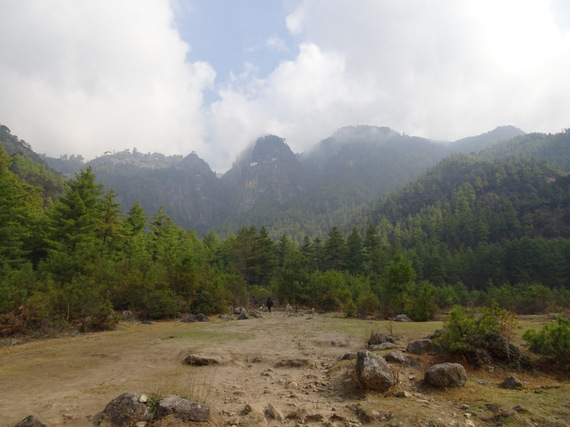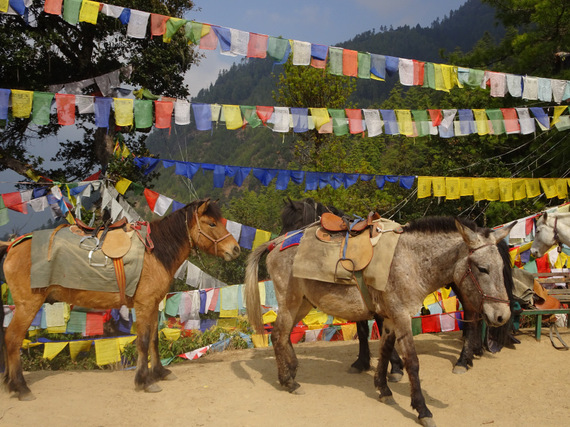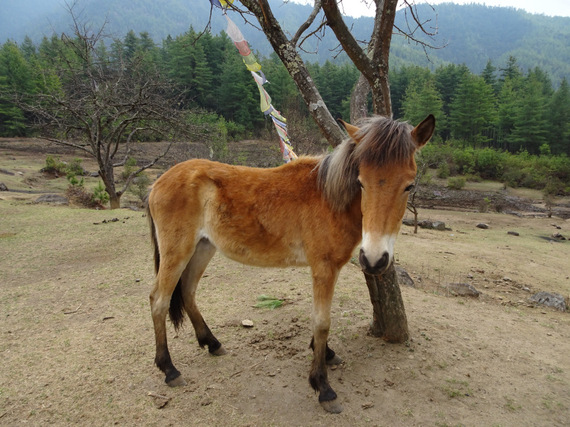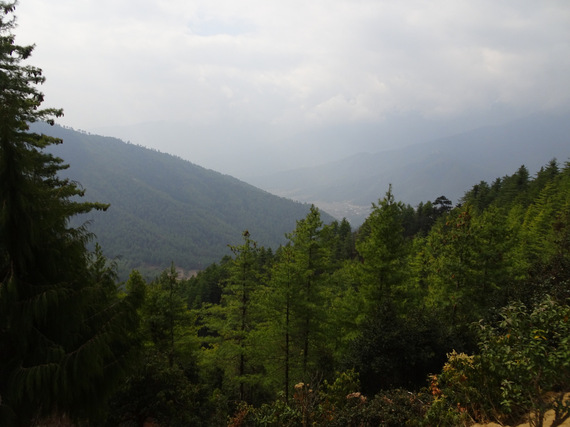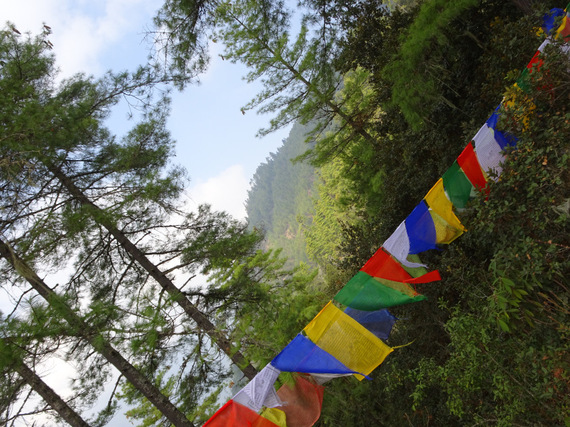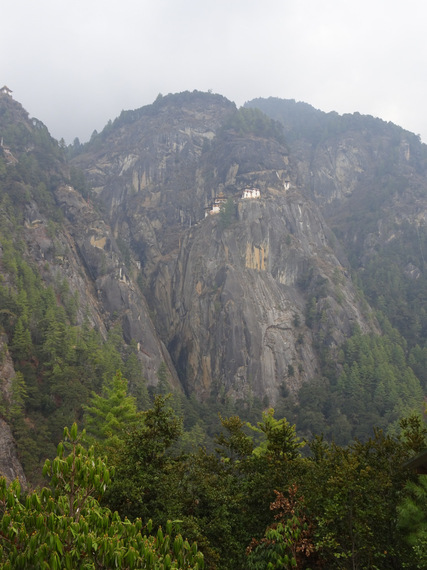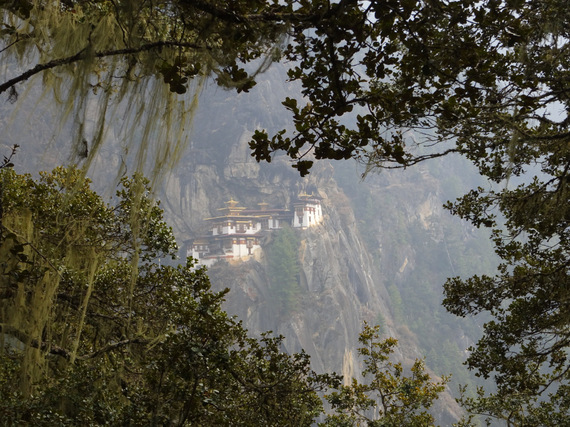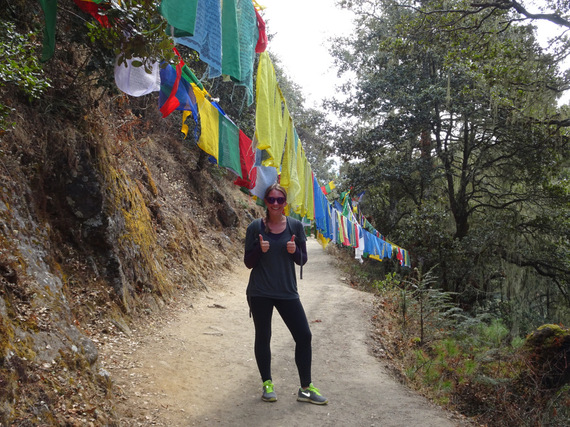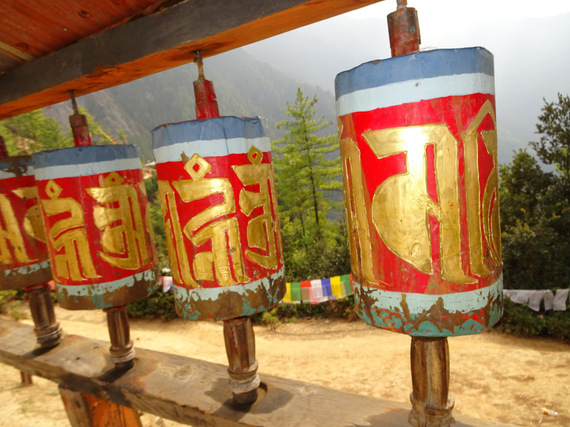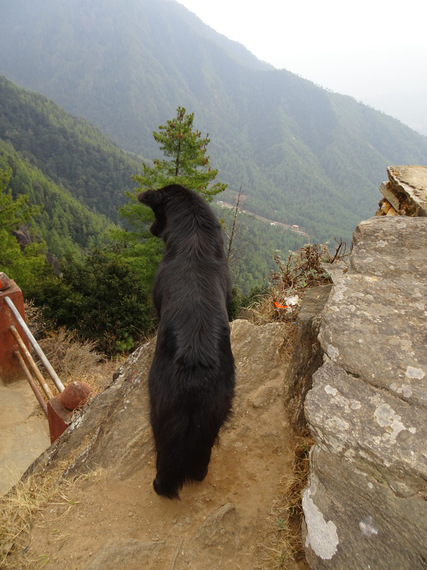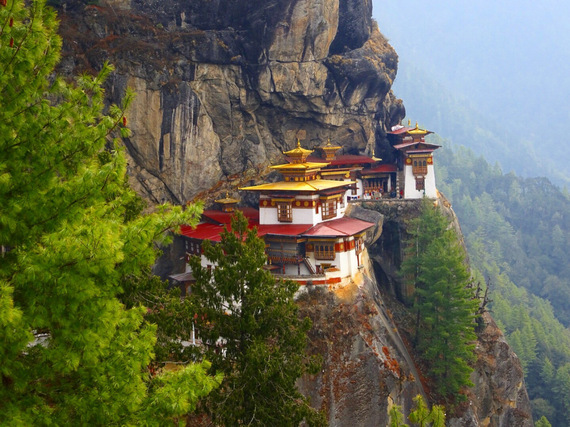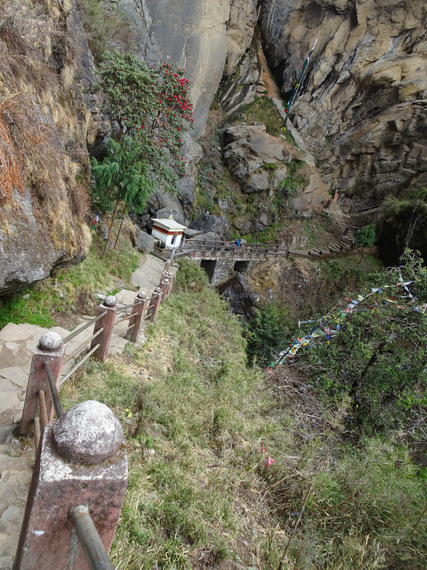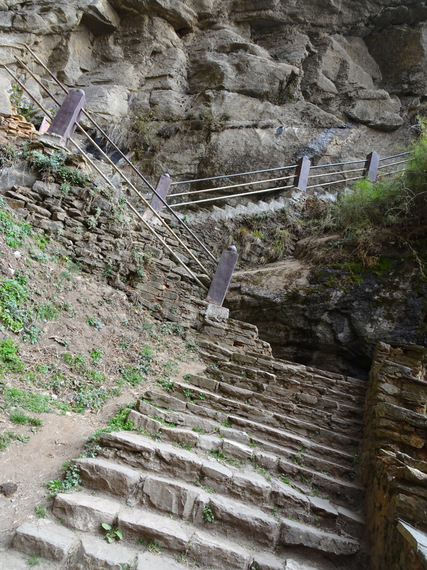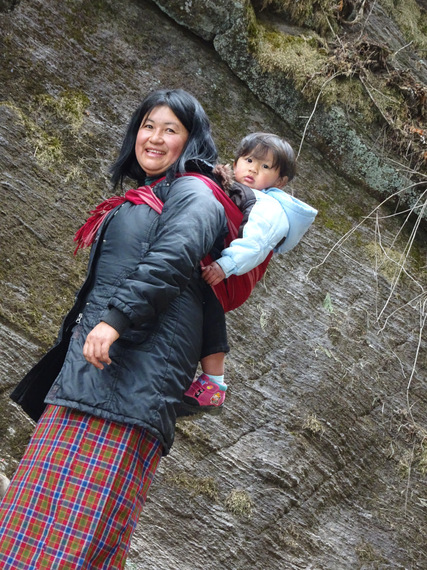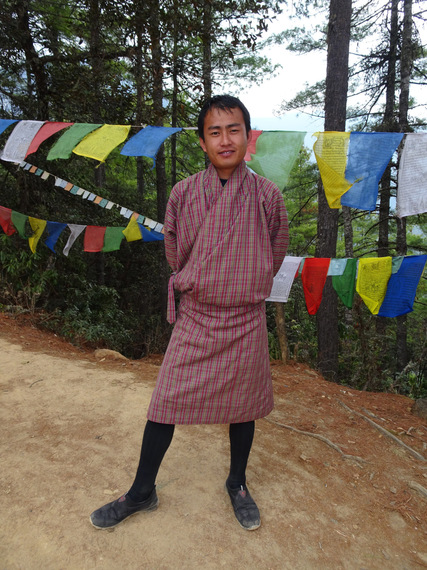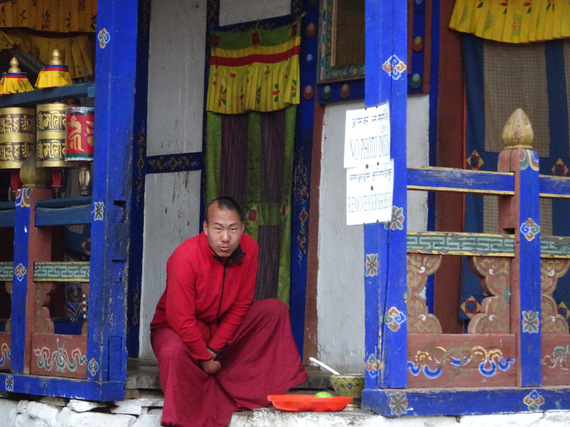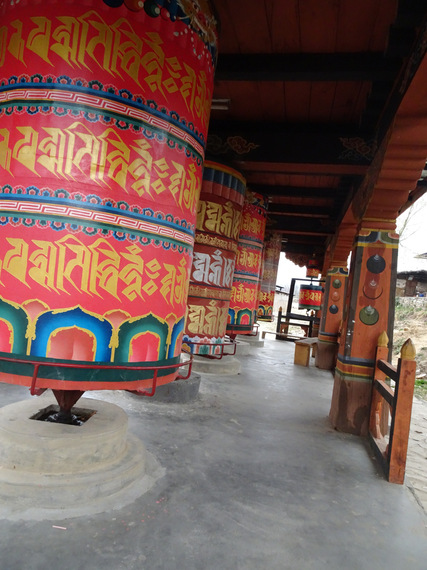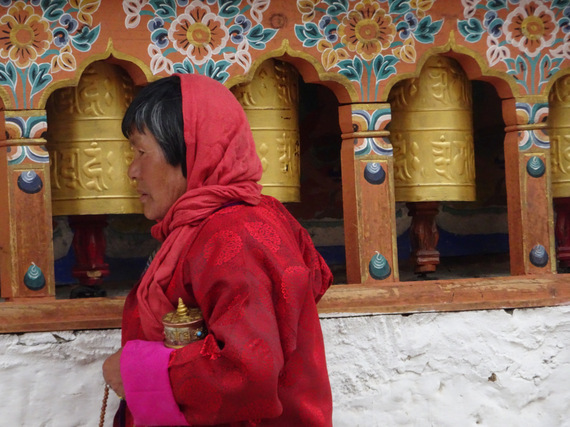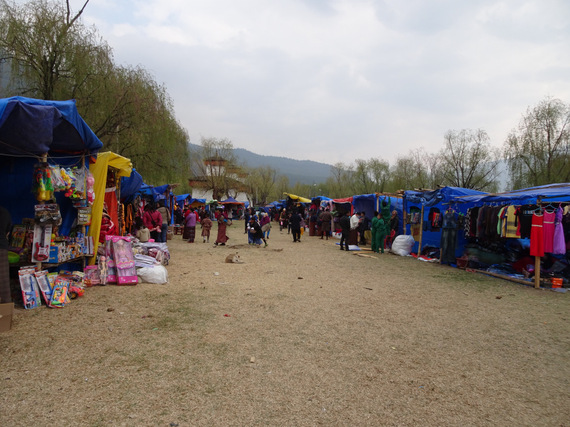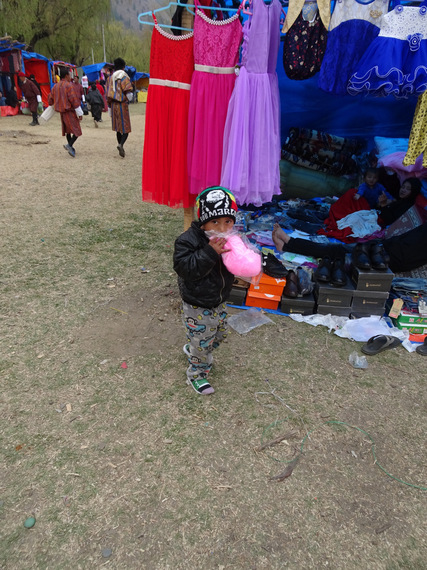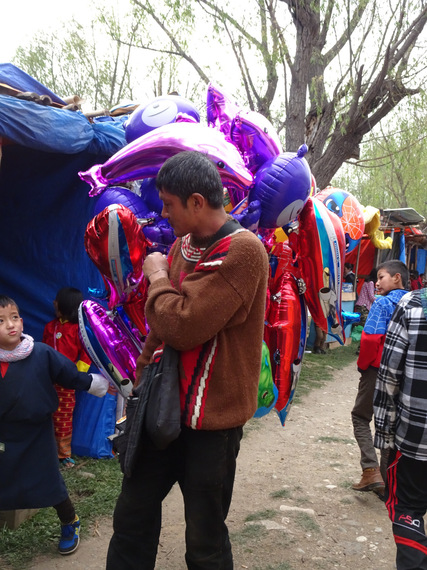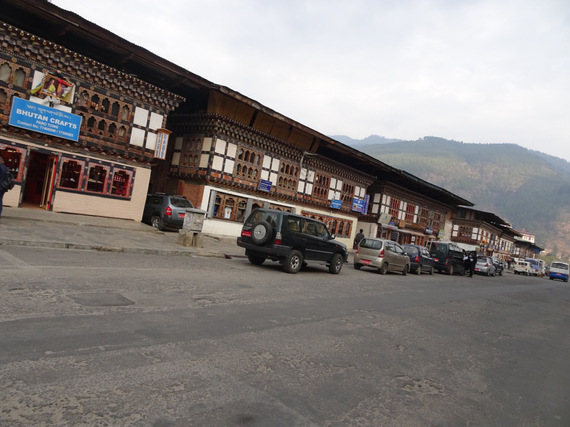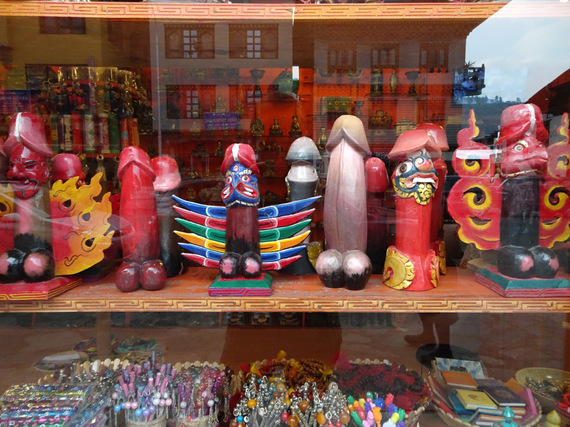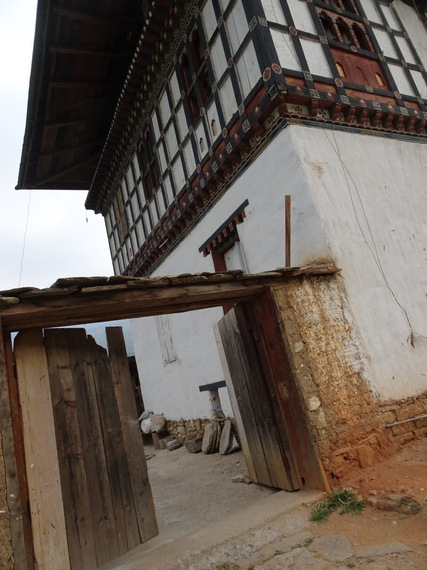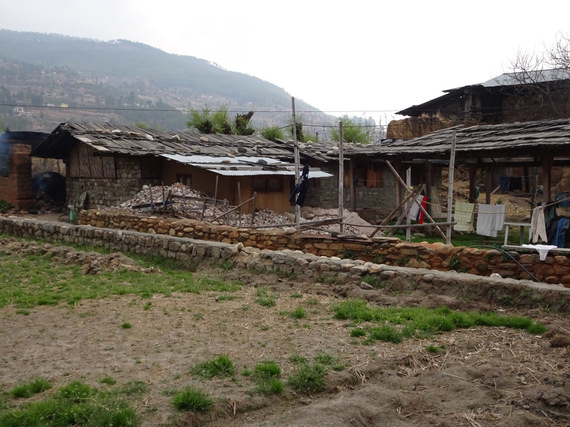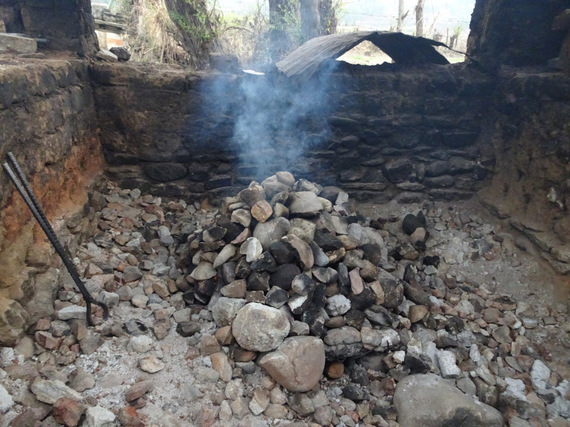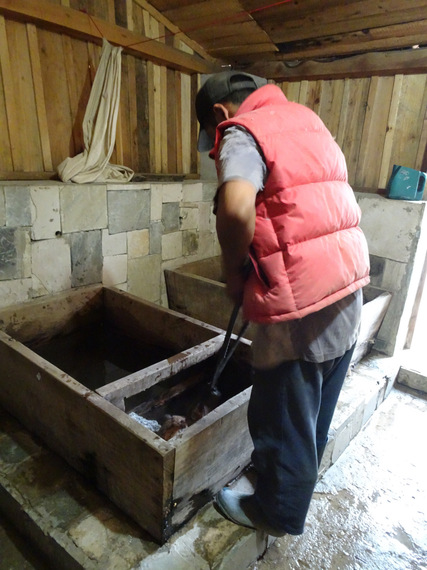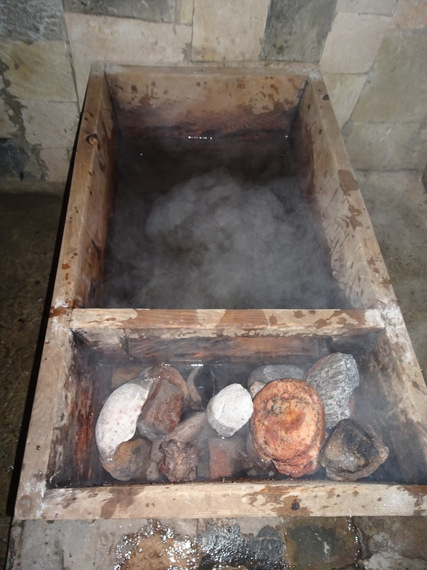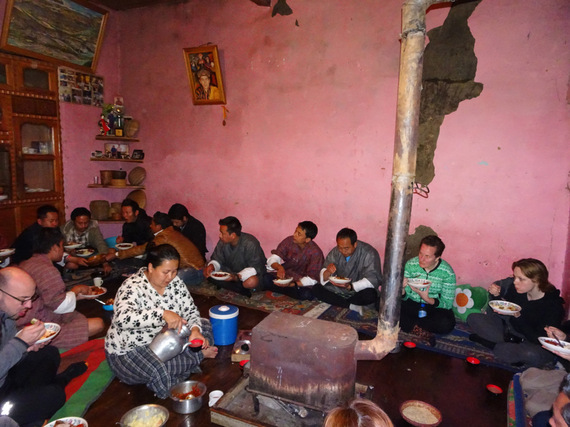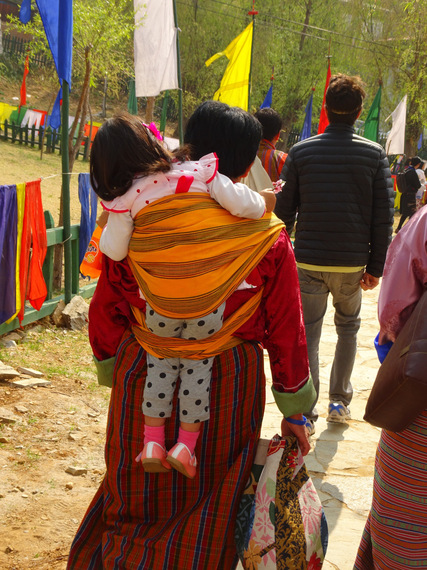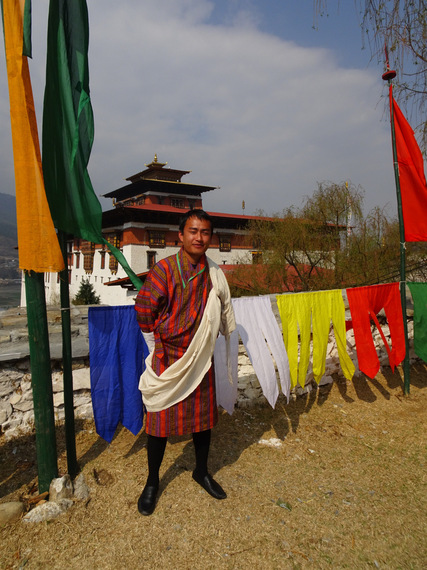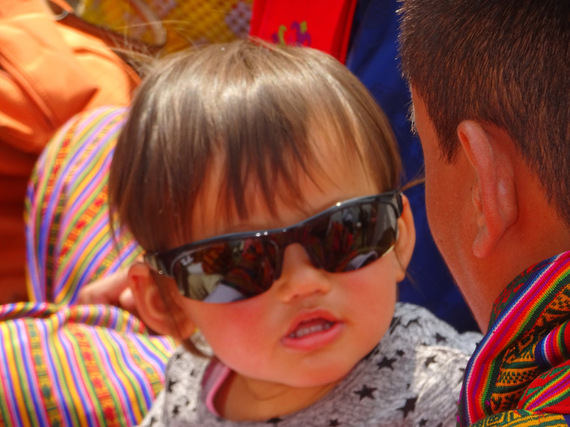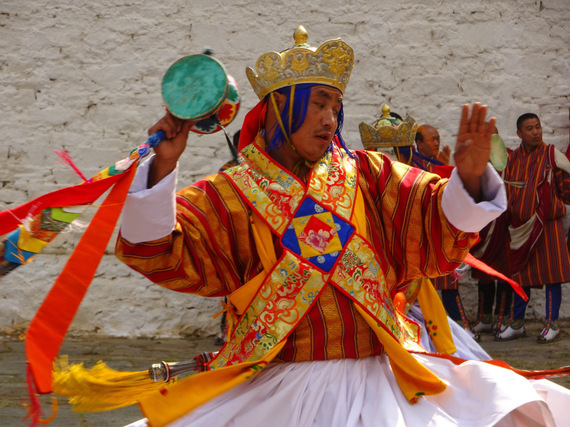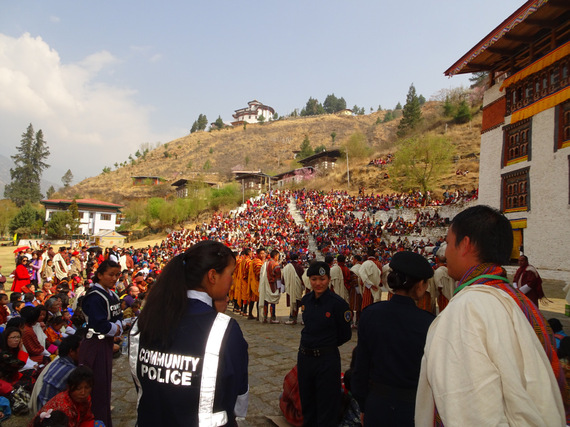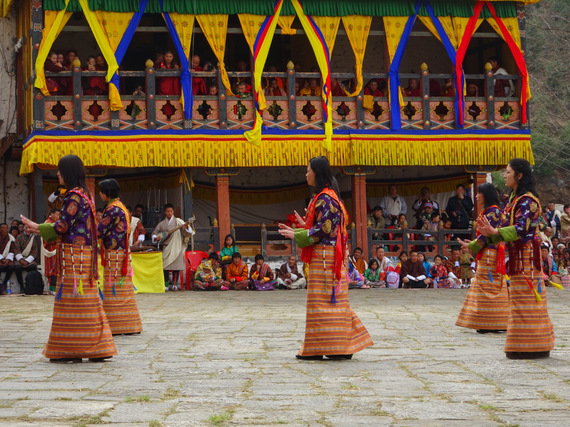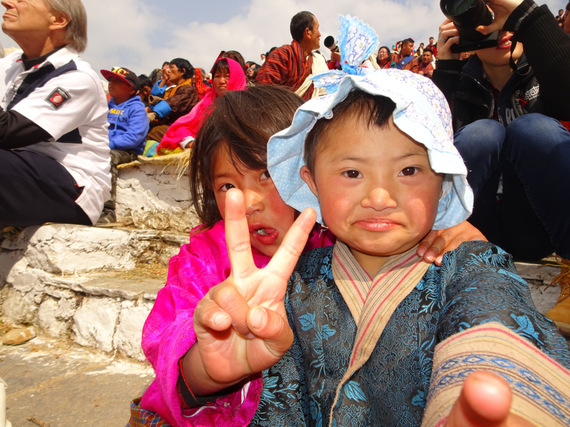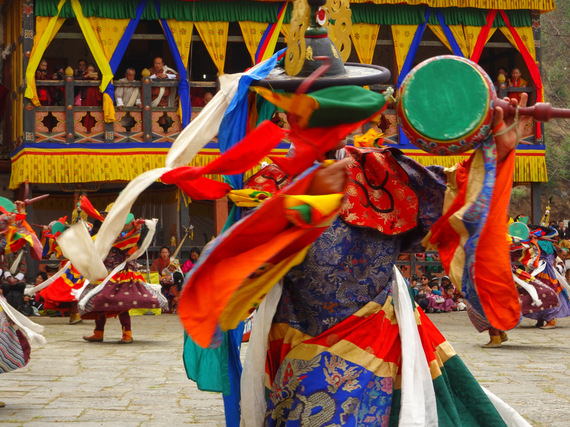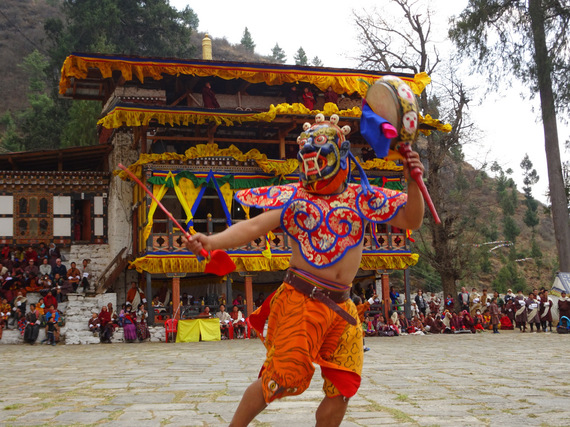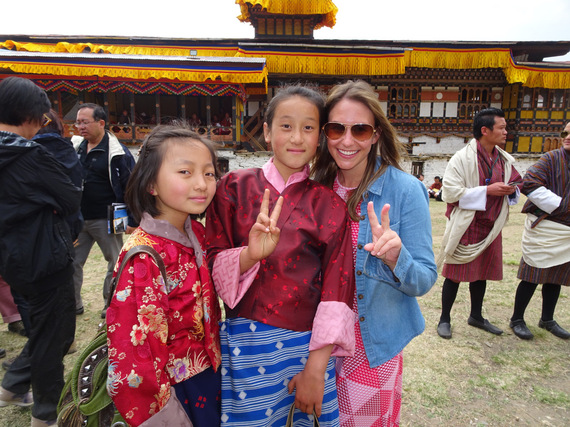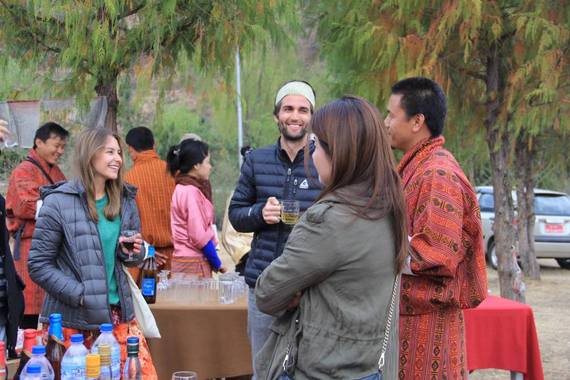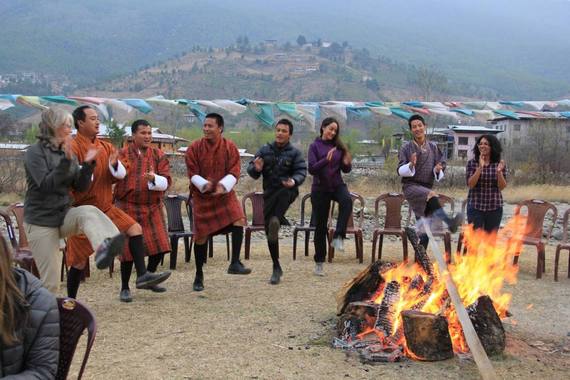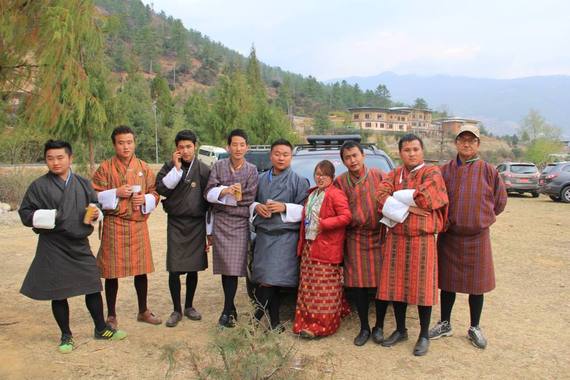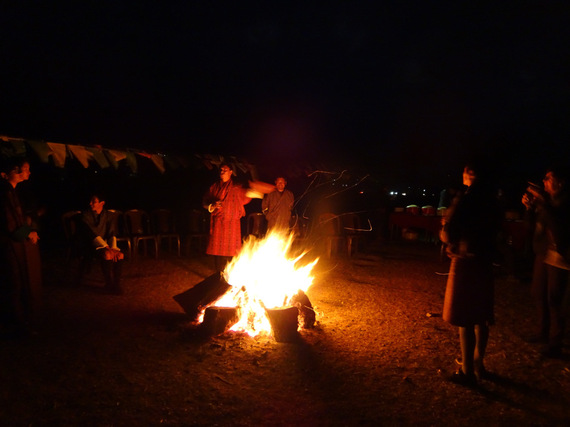We arrived at Bhutan Mandala Resort in Paro around 5:30pm after a four hour drive from Punakha. The past few days have been absolutely incredible but they have also been intensely nonstop. Our eyelids weigh more than a Japanese sumo wrestler right now and our bodies feel like a melted container of jello, all over the place with no substance. Since tomorrow is the big Tiger's Nest hike, we treated ourselves to some much needed down time in our room, grabbed some dinner at the hotel and called it a night by 10:30pm. We wanted our mind, legs and stamina to be 110 percent by morning.
Today, March 19th, we met Kezang and Tenzin in the hotel lobby around 9am and drove about twenty minutes to the base of the Taktsang Monastery, otherwise known as Tiger's Nest. This monastery is one of the most important cultural icons of Bhutan, the granddaddy of them all and what we've been "training" for over the last few days. Now that I have explained a few of Bhutan's out-of-this-world mythological beliefs such as the phallus warding off evil and the Temple of Fertility allowing those challenged to conceive, let me now tell you the history behind this specific establishment. According to legend, Guru Padmasambhava (Guru Rinpoche) reached the temple site of Paro Taktsang in the 8th century by flying on the back of a tigress from Tibet. Guru Padmasambhava was a Brahmin royal who spread Tantric Buddhism throughout Bhutan in the 700's. The name "Taktsang" literally means Tiger's Lair and was derived when the people in the locality came across a tigress residing in one of the caves. Rinpoche meditated in thirteen small monasteries or 'tiger nest' caves, of which Paro Taktsang is the best known. It is said he meditated in the cave on the mountain for three years, three months, three weeks, three days and three hours. After completing his meditation, Guru Padmasambhava subjugated the eight categories of evil spirits and converted the Bhutanese to Buddhism. Today, he is viewed as holy as the Buddha himself, regarded as the Second Buddha, and a guardian spirit of Bhutan. His followers are convinced he is still alive and active but in another form, as Rainbow Body. So there you have it. Another wild concept strongly believed throughout this fascinating country. Of course a tigress flew up there, how else would one have arrived back then? At least now they have paths for us tourists because riding a tiger probably isn't considered humane anymore. Duh.
This is where we started. Down on the ground, with only two tiny white dots playing peek-a-boo with you high in the mountains yelling catch me if you can. From this point, I kept thinking "there's no way you can walk to that". It seemed as though the monastery was floating at an unobtainable level. But after a little while, you slowly realize it is obtainable and I can't wait to add this to my collection of memories.
The path wasn't paved nor was it flat. It was rocky, dusty, and all uphill but without sounding cheesy or cliche (although that is my speciality), it really added to the overall experience.
Since Monks live at The Tiger's Nest and there is a cafeteria mid-way through the hike, various supplies such as food, water, etc. need to make its way up somehow. Us humans aren't really equipped for that sort of weight so they use donkeys. And, for those folks that are a little older or not in that great of shape or just plain lazy, they can pay a pretty penny to ride a donkey half way but after that, it gets a little too steep and a little too narrow to depend on an animal you can't fully communicate with. What an ass.
Breathtaking (literally because of the altitude) scenery every next level you reached...
And with every turn, you could see the Tiger's Nest getting closer and closer, bigger and bigger, brighter and brighter...
Prayer flags and prayer wheels were everywhere along the way...
There was also a guard dog, making sure everyone is safe...
After about an hour and forty five minutes of huffing and puffing uphill, we came to an official photo opp of the Tiger's Nest. This was the closest we've seen it and oh boy was it absolutely stunning. It literally hugs the side of the cliff over 10,000 feet above sea level. The green forest trees mixed with the brown mountains mixed with the red, white and gold architecture leaves you in complete and utter awe. I could have stayed at this point all day and just stared. One of the most beautiful creations I've ever witnessed in person.
Now that we've snapped almost a hundred photos, we then had to slowly and carefully go up and down over 850 steps before arriving at the entrance. If you are afraid of heights, this probably isn't for you. One trip on your shoe lace and your done. There isn't much room for a careless mistake and unfortunately, a 54 year old woman from Thailand learned that the hard way. In January 2015, she was taking a photo, lost her balance and fell over the side. I think then there weren't any railings but now they have added them to avoid the same situation from occurring again. Very tragic.
To hike the Tiger's Nest is a challenge in itself, I couldn't imagine doing it with a baby on my back, only being supported by a piece of cloth and still managing to smile for a random tourists photo...
I was pretty hot and sweaty the entire way up but once we reached the top, the weather drastically changed. It was absolutely freezing and fairly windy. My nose was as red as Rudolph's, my toes and fingers quickly became numb and with every heavy breath I let out, it was as if I was exhaling smoke from a cigarette. From this point on, we couldn't take any photos. In fact, we had to check all of our belongings before entering. For the next hour, we visited eight different temples, all holding such a significant importance. Kezang was mentioning that this is one of the holiest Buddhist monasteries in the world and that every Buddhist dreams of being right where we are standing at this very moment.
One the way back down, we stopped at the cafeteria and had some tea and biscuits. Going up was much easier for Vinny and going down was much easier for me, although my left knee cap was still bruised from my bike fall in Mumbai. We always seem to be on opposite levels but somehow it works (or at least I think it does).
Here is our guide, Kezang, in his traditional Bhutanese attire. He did manage to swap out his nice black dress shoes for some more Tiger's Nest appropriate footwear.
We were on such a high after this experience. It would have been totally okay with us to call it a day at this point because nothing could really ever match, or even come close, to what we just saw. However, with limited time in Bhutan, there's no rest for the wicked.
Next on our agenda was Kyichu Lhaknang, one of the oldest temples in Bhutan. It is widely believed to have been built in 659 by King Songtsen Gampo of Tibet, to pin down the left foot of a giant ogress who was thwarting the establishment of Buddhism into Tibet. As you enter the intimate inner courtyard you'll see a mural to the right of the doorway of King Gesar of Ling, the popular Tibetan warrior-king, whose epic poem is said to be the world's longest. The inside of the temple, which we couldn't take photos of, supposedly still has its original floors, made from real wood (would love these in whatever house I might or might not own down the road) and original paintings on the walls, which are very much faded now.
Then we walked around the actual town of Paro. Since the annual Paro Tsechu Festival began today, there were a ton of activities happening. There was a flea like market that had at least twenty tents selling random stuff, including a balloon man -- you can't have a festival without a balloon man. And various craft stores along the main street had decorated phalluses in their windows for sale. Fascinating.
Last but certainly not least, Bhutan Swallowtail treated us to a very special evening at a traditional farmhouse. This farmhouse has been with the same family for over 300 years.
To help our bodies recover from the Tiger's Nest hike (not that it was that strenuous at all), they set up a traditional hot stone bath for us, which is widely practiced in Bhutan and is also a method to overcome various complications and illnesses. This consisted of heating the river rocks with fire then moving them into the water of the wooden made bath, which essentially is supposed to release key minerals and relieve deep-set aches of the body. It was just Vinny and I in the room. We closed our eyes and enjoyed this somewhat pampering, extremely relaxing feeling for about forty five minutes. Whenever we felt the water was getting cold, they would bring us more stones. Every time the hot stones would enter the bath, it sizzled dramatically as if they were serving chicken fajitas (or beef fajitas or shrimp fajitas, you get the point). And when we came out, our bodies had so much steam escaping them. What a neat concept.
The farmhouse family hosted a handful of us for a traditional Bhutanese dinner after our hot stone baths. We all sat on the floor, in a semi circle and ate a home cooked meal. People were representing countries from all over the world including Japan, Netherlands, Germany, Sweden, London, USA, and obviously Bhutan. The woman in the middle of this photo pouring the butter tea is part of the family who owns this farmhouse. She is the eighth generation to live there and her kids are the ninth generation.
What an incredible, authentic, memorable day and night we had. I literally feel like a flying tigress, I'm that high on life right now.
The next day, March 20th, was our last day in Bhutan and what better way to celebrate it than with the Paro Tshechu Festival. Featuring dances performed by trained monks and laymen in amazing masks and costumes, we were told by Bhutan Swallowtail that Tsechus (festivals) are one of the best ways to experience the ancient living culture of Bhutan. A Tsechu is a Buddhist festival in honour of Guru Rimpoche, the saint who brought Buddhism to Bhutan and the one who mediated at The Tiger's Nest (if you don't know what I'm talking about, you obviously didn't read the history I explained in great detail earlier. Shame on you). Thousands of locals and tourists come from all over the country to witness this festival. The overall vibe was nothing like we've ever seen before. People were so calm, captivated, happy and of course, dressed in their very best Bhutanese attire.
These adorable girls came up to talk to us because they wanted to practice their English. They asked if we loved our King as much as they loved their King and when I tried to explain we have Presidents that are elected, not Royalty that is inherited, they didn't quite understand that concept. But they were real sweet and I was quite impressed with their vocabulary. Easterners love to give the peace sign so I played along.
That night, Bhutan Swallowtail hosted nineteen of us for dinner outside by the river. There was a bon fire (it was sooooo cold!) and all the guides taught us some local songs and dances. The alcohol was flowing (the Bhutanese love to drink!) and everyone was slowly loosening up with every sip. It felt like sleep away camp almost. What a fun night and a wonderful way to end such an unbelievable week in such an unbelievable country.
Bhutan is as close to heaven as you can get while still being alive. Every day for seven days, we experienced the natural charm of the first country where Gross National Happiness is deemed more important than Gross National Product. It's a fairytale kind of land sprinkled with the perfect amount of joy, contentment, respect, happiness and an overall genuine appreciation for life. Everywhere else in the world should strive to have the same vision and values as the Bhutanese. It's hard to believe a place like this exists but it does and we were lucky enough to experience it first hand.
As the locals say, Log jay gay, meaning goodbye and we will meet again!


